Crop steering manipulates a plant's environment and root zone to influence metabolic/hormonal changes that inspire vigorous growth and greater yields. This is achieved by dialing in environmental conditions throughout different growth stages and managing irrigation events to mimic natural stressors the plant would encounter in nature. Let's focus on the irrigation strategy commonly employed when attempting to crop steer.
Steering with irrigation
There are four main irrigation phases we will focus on that should occur over a 24-hour period.
Phase Zero is the time period between the lights coming on and the first irrigation event of the day. This is what we refer to as "additional dry back" in our Crop Steering Program. This additional dryback is especially important as it not only indicates when plants begin transpiring but also helps to steer the plants' metabolic balance for that day. Additional dry backs in this phase ranging from 1-3%, are commonly used when steering vegetatively, while dry backs in the 4-6% range are often used when steering generatively. When steering generatively, substrate EC will often reach its peak during this phase as there is a substantial build-up of salts inside the substrate with very little moisture to dilute them. When steering vegetatively, substrate EC will often be slightly lower than the feed EC due to plants taking up a large percentage of available nutrients.
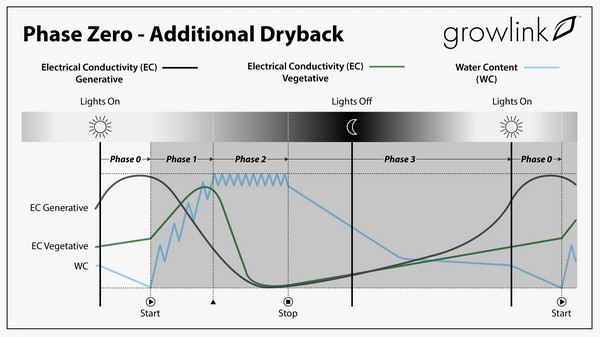
Phase One, also known as the "Ramp Up," is defined as the time between the first irrigation event of the day and when the substrate reaches its maximum target VWC% or field capacity. It is important to gradually raise your VWC by using small irrigation events (shots) rather than dosing it all at once to prevent unwanted channeling. Water will always take the path of least resistance on its journey due to gravity, so flooding the substrate with more water than can be readily absorbed will result in excess runoff and less than optimum even water absorption. When steering generatively, the increase in water volume should help dilute the built-up salts in the substrate, lowering the pore EC reading; however, when steering vegetatively, substrate EC should begin to rise to or above your feed EC depending on the amount of salt build-up present.
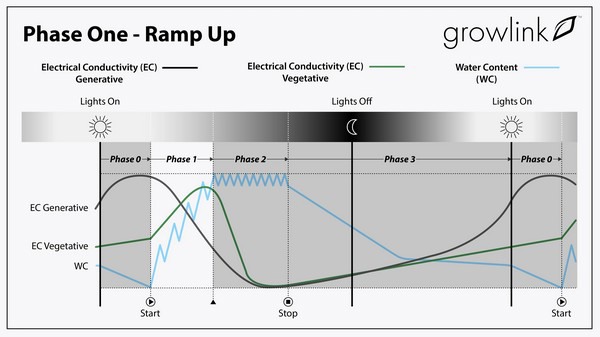
Phase Two, or the "Maintenance Phase," is the time period between when the substrate reaches its maximum VWC% and the last irrigation event of the day. This phase adjusts the EC in your substrate by using smaller or larger dry backs in between shots. During this phase, your dryback% will also equal your shot size to maintain the desired VWC%. Smaller, more frequent shots will allow for more runoff, which will help flush out the built-up salts in the substrate, lowering your EC. Conversely, larger, less frequent shots will decrease the chances of runoff, thus allowing you to stack your EC in the substrate.
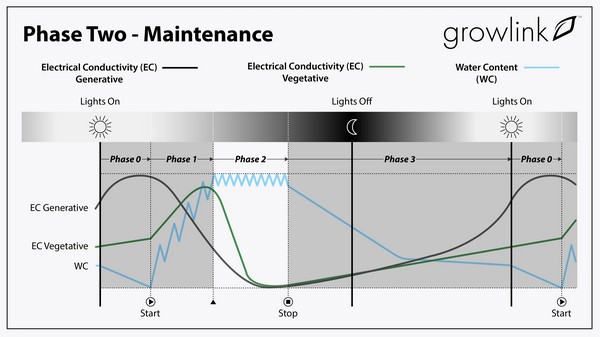
These EC changes often take several days to become apparent. The duration of this phase is determined by your plant's ability to uptake water during your overnight dryback paired with the percentage of dryback you are aiming for. If you want a larger dryback, but your plant is smaller and cannot take up enough water to reach your goal, you would shorten this phase, allowing more time for your plant to transpire. When steering generatively, substrate EC will continue to decline as it reaches its peak desired saturation, diluting built-up salts and potentially flushing them out with a lower EC solution. The target maintenance dry back setting largely determines the rate at which this occurs. When steering vegetatively, substrate EC should begin to decline as plants take up larger amounts of nutrients due to lower osmotic pressures and increased runoff typical of this phase.
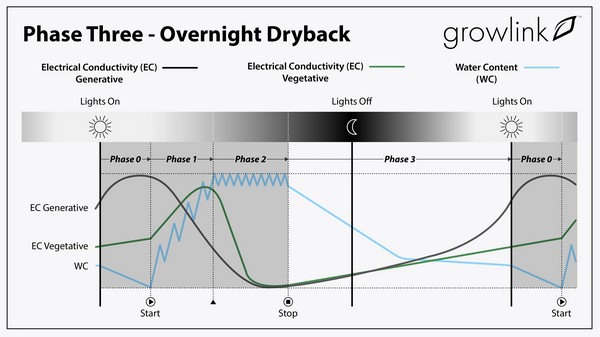
Phase Three is known as the "Overnight dry Back" phase. It's defined as the time between the last irrigation event of the day and when lights turn on the following day. During this time, the VWC% of your substrate will begin to quickly dry out as the plant continues to transpire during the remainder of your lights-on period and then shift to a more gradual drying pattern once the lights go out. This period is crucial as it exposes your plant to minor drought stress, triggering the desired hormonal response covered previously. It is common to end irrigation events several hours before lights turn off when steering generatively and push it closer to lights turning off when steering vegetatively.
Due to the increase in osmotic pressure in the root zone when steering generatively, more water than nutrients are up taken, resulting in a build-up of salts over time. The less water available to dilute those salts, the higher the pore EC reading will become. While the rootzone pressure isn't as high when steering vegetatively, plants are still unable to uptake 100% of the nutrients available, so salts will inevitably build-up, which, paired with a decrease in water content to dilute them, will cause pore EC readings to rise slowly.
For more information: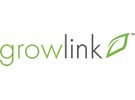 Growlink
Growlink
875 Kalamath
Denver, CO 80204
+800-432-0160
info@growlink.com
growlink.com
Next Post
Subscribe Here!
Growlink is a leading provider of data-driven farm automation and networking systems for greenhouse and indoor vertical farming.
LINKS
About Us
Contact Us
Privacy
BROWSE
Our Blog
Resources
Care
